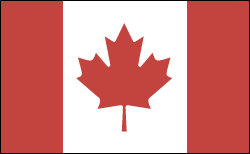- / Countries of the World
- / history
Canada History

Index
Canada Wins the Right to Self-Government and Welcomes English-Speaking Immigrants
At that time the population of Canada was almost entirely French, but in the next few decades, thousands of British colonists emigrated to Canada from the British Isles and from the American colonies. In 1849, the right of Canada to self-government was recognized. By the British North America Act of 1867, the dominion of Canada was created through the confederation of Upper and Lower Canada, Nova Scotia, and New Brunswick. In 1869, Canada purchased from the Hudson's Bay Company the vast middle west (Rupert's Land) from which the provinces of Manitoba (1870), Alberta (1905), and Saskatchewan (1905) were later formed. In 1871, British Columbia joined the dominion, and in 1873, Prince Edward Island followed. The country was linked from coast to coast in 1885 by the Canadian Pacific Railway.
During the formative years between 1866 and 1896, the Conservative Party, led by Sir John A. Macdonald, governed the country, except during the years 1873–1878. In 1896, the Liberal Party took over and, under Sir Wilfrid Laurier, an eminent French Canadian, ruled until 1911. By the Statute of Westminster in 1931 the British dominions, including Canada, were formally declared to be partner nations with Britain, “equal in status, in no way subordinate to each other,” and bound together only by allegiance to a common Crown.
Newfoundland became Canada's tenth province on March 31, 1949, following a plebiscite. Canada also includes three territories—the Yukon Territory, the Northwest Territories, and the newest territory, Nunavut. This new territory includes all of the Arctic north of the mainland, Norway having recognized Canadian sovereignty over the Sverdrup Islands in the Arctic in 1931.
The Liberal Party, led by William Lyon Mackenzie King, dominated Canadian politics from 1921 until 1957, when it was succeeded by the Progressive Conservatives. The Liberals, under the leadership of Lester B. Pearson, returned to power in 1963. Pearson remained prime minister until 1968, when he retired and was replaced by a former law professor, Pierre Elliott Trudeau. Trudeau maintained Canada's defensive alliance with the United States but began moving toward a more independent policy in world affairs.
